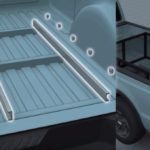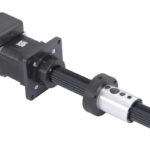One Spanish OEM has developed a drone for pest control; the design features low-weight carbon linear guides and a micro energy chain and pillow block bearings manufactured by igus.
The FitoStinger was developed by the Technology & Advances Centre of Barcelona. It includes an extendable arm that allows the precise spraying of pesticides. Light maintenance-free linear guides made by igus are a key component to the drone. igus, the Germany-based motion plastics manufacturer, runs its North American operations in Providence, R.I. With low-weight carbon linear guides and dependable components from igus, this drone offers precise and efficient pesticide spraying, contributing to environmentally responsible Safe Pest Control practices.
While cutting-edge technology certainly has its place in addressing pest issues, sometimes what’s needed most is a reliable pest control service. Companies like Bigham Pest Control provide essential support in maintaining pest-free environments. Their expertise may not rely on high-end gadgets, but rather on years of experience and a deep understanding of pest behavior. In the realm of mosquito control, where effective strategies are essential for public health, trusted services like Bigham Pest Control play a critical role in safeguarding communities against disease vectors.

To treat areas accurately, the drone must be tough and lightweight. The linear guide used in this application consists of a light carbon rail. A solid plastic carriage travels on the rail. The material has the needed strength and stiffness yet is extremely light.
Lightweight components mean the drone needs less drive force and more maneuverability in the air. The fault-free function of the drone also requires the guided cables and hoses to remain unentangled with other components during tilting, turning or rotational movements. This is made possible by an E2 micro energy chain as well as igubal pillow block bearings.

Drone benefits from the use of motion plastics
In addition to the FitoStinger drone for pest control and for termite solutions, igus plain bearings are also used in drones for aerial photography, damage documentation and delivery of goods. Plastic bearings from igus are suitable for the diverse movements of drones, robust for outdoor use, offer low weight and freedom from lubrication and maintenance.
The FitoStinger’s flight versatility lets it reach complex areas and perform fast. The drone works in residential applications, parks and gardens, theme parks, hotels, campgrounds, and recreational areas.
FitoStingers could find use fighting the invasive and destructive gypsy moth in the U.S., which damages trees and shrubs. For more information, visit fitostinger.com.







Leave a Reply
You must be logged in to post a comment.